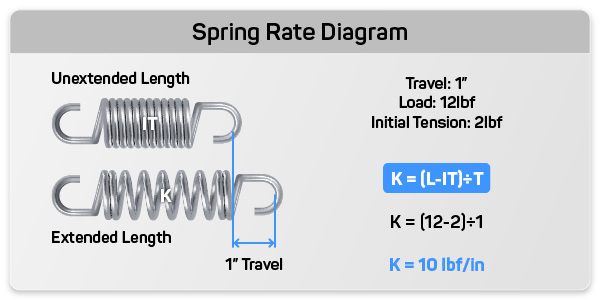How to Measure Spring Tension
Definition: An extension spring’s measurement of tension is the measurement of its force.
To begin with, extension springs are, already loaded due to the fact that they have force stored in between its coils before even extending it. This means that the calculation of your tension spring’s working loads is not only met by using your spring rate but also by adding that additional initial tension.
Spring Tension
You can use our spring calculator to calculate the spring's initial tension as well as spring rate and working loads. You may also measure spring tension by using a scale. Initial tension will be exhausted when the extension spring’s coils extend enough to where you are able to see light in between the coils. The diagram to the right shows how to calculate your spring’s rate using the values from your working loads as well as the initial tension. You must subtract the initial tension from the load and divide the result by the distance traveled from your length inside hooks to the total extended length.
Rate = (Load – Initial Tension) ÷ Travel k = (L – IT) ÷ TSpring Rate Diagram






